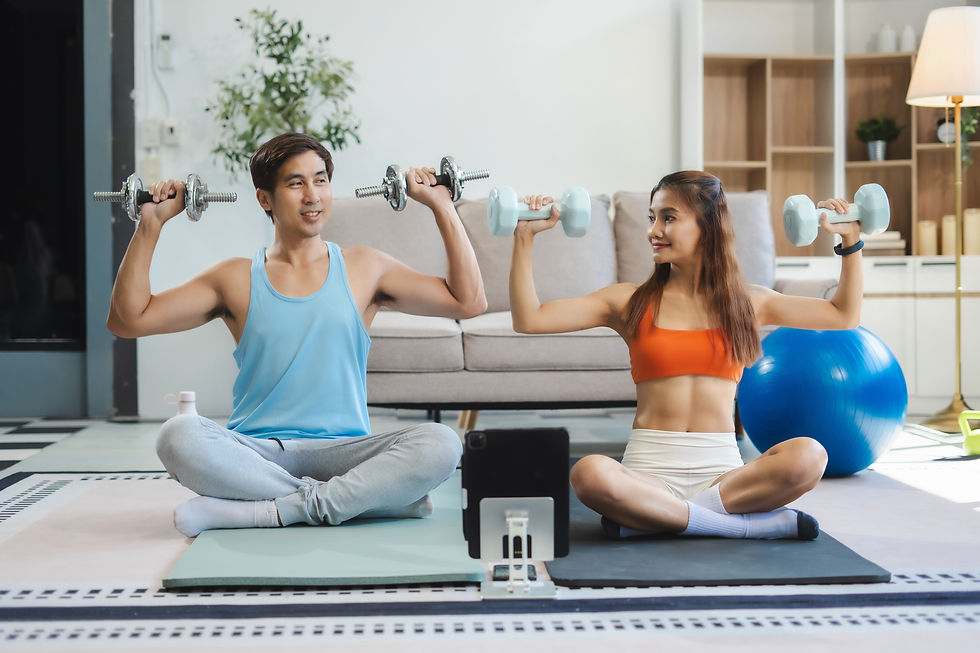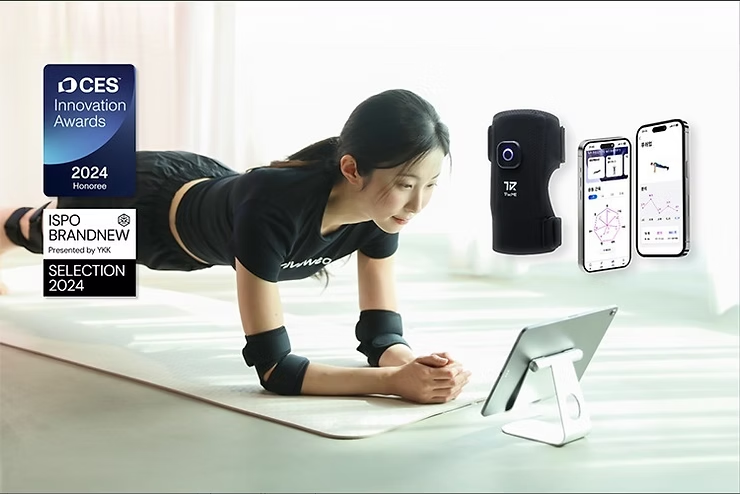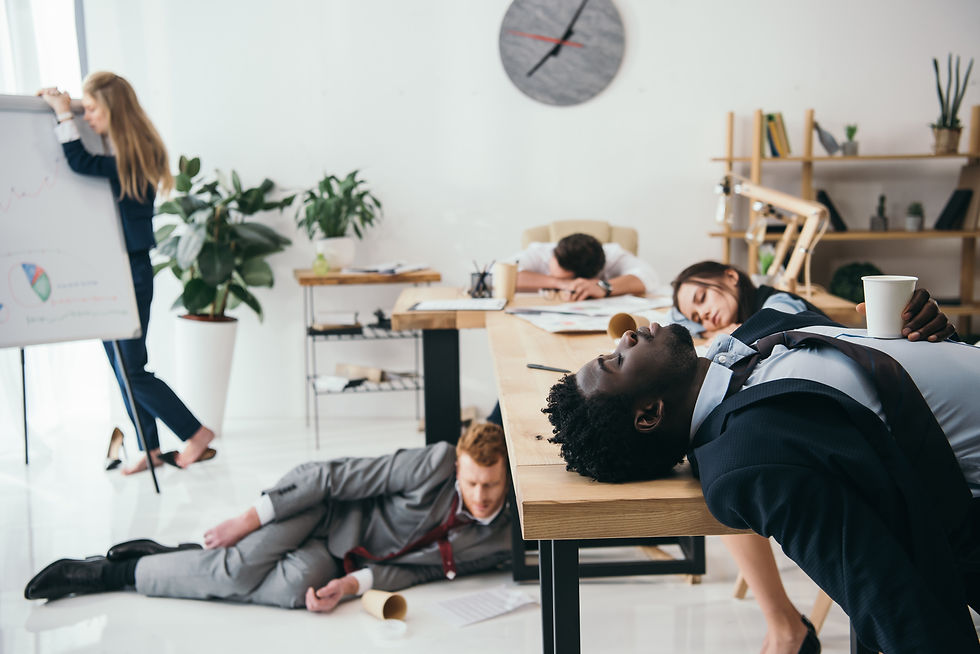How Exercise Slows Aging: The Science Behind Movement and Skin Health
- wavecompany

- 2일 전
- 3분 분량
최종 수정일: 11시간 전
Aging isn’t just about appearance.
At the cellular level, it's driven by decline in energy metabolism, muscle mass, and tissue integrity. These changes accelerate when physical activity is inconsistent, poorly executed, or lacks the necessary intensity.

But research shows: targeted, structured movement can significantly slow biological aging [Zhou et al., 2022]
Exercise as a Molecular Intervention
1. High-Intensity Circuit Training (HICT) Triggers Longevity Pathways
Short bursts of intense, compound movements (like Tabata or circuit resistance training) stimulate mitochondrial biogenesis and promote Excess Post-exercise Oxygen Consumption (EPOC). This keeps metabolism elevated for hours and activates key anti-aging mechanisms.
2. Telomere Preservation Through Load-Based Movement
Telomeres, the protective ends of chromosomes, shorten with age, stress, and repeated cellular replication, a key factor in biological aging. But evidence shows that regular physical activity can help preserve telomere length and cellular health.

A multi-expert consensus published in Aging Cell “Interventions to Slow Aging in Humans: Are We Ready?” highlights telomere preservation as one of the most promising biomarkers for slowing the aging process (Longo et al., 2015). The paper underscores exercise as a credible intervention to delay age-related decline through measurable cellular mechanisms.

Sustained, load-based movement doesn’t just improve strength or endurance. It supports molecular resilience, helping you stay biologically younger, longer.
3. Strength Training Enhances Skin Integrity
Recent studies show that resistance training boosts skin elasticity and dermal thickness by enhancing ECM gene expression and reducing inflammation, effects not equally seen with aerobic training (Nishikori et al., 2023). This mechanical stress activates skin-supporting proteins like biglycan, helping maintain hydration and firmness as we age.

So Why Don’t More People Reap These Benefits?
Most people’s routines fall short because:
Intensity isn’t tracked or personalized; what you’re doing is designed for someone else.
Movement quality goes unmeasured. We often focus on achieving a certain number of reps when the goal should be challenging ourselves.
Effort is inconsistent over time. Progress is slow and steady, but the results are clear. Without data, even “hard” workouts may underdeliver.
How Smartwear Enables Smarter Aging
This “slowed-aging” once seemed to be a luxury only the wealthiest of celebrities could unlock. But now, the industry is changing, and it’s developing technologies that will massively increase access. “Wearables” are any piece of technology that may be attached during physical activity, allowing for specific metrics like heartrate, distance travelled, or even movement to be tracked.

Systems like TracMe, using stretchable conductive sensors (TracSil™), measure joint motion, angles, and volume of movement in real time, with no need for cameras or lab setups. When implementing TracMe and integrated feedback via TracMe’s mobile app, users not only train at the right intensity, but know exactly how they’re progressing towards their goals.
The result? Better form. Greater consistency. A physiology that physically ages slower, not just feels younger.

Aging Happens, But the Rate Is Up to You
You don’t need hours in the gym, ridiculously restrictive dieting that isn’t tailored to you, or complex devices. The science is clear: small, consistent, high-effort movement, tracked and guided, has measurable anti-aging effects. Anyone can accomplish this, why not start today.
Sources
Ludlow, A. T., Spangenburg, E. E., Chin, E. R., & Roth, S. M. (2014). Telomeres and their role in aging and exercise. Medicine and Science in Sports and Exercise, 46(2), 393–400. https://www.ncbi.nlm.nih.gov/pmc/articles/PMC4531065/
Nishikori, S., Yasuda, J., Murata, K., Takegaki, J., Harada, Y., Shirai, Y., & Fujita, S. (2023). Resistance training rejuvenates aging skin by reducing circulating inflammatory factors and enhancing dermal extracellular matrices. Scientific Reports, 13, Article 10214. https://doi.org/10.1038/s41598-023-37207-9
Zhou, Q., Zhang, Y., & Yu, H. (2022). Exercise-induced benefits for skin aging: The interplay between physical activity and dermal health. Signal Transduction and Targeted Therapy, 7(1), Article 263. https://doi.org/10.1038/s41392-022-01251-0






.png)




コメント